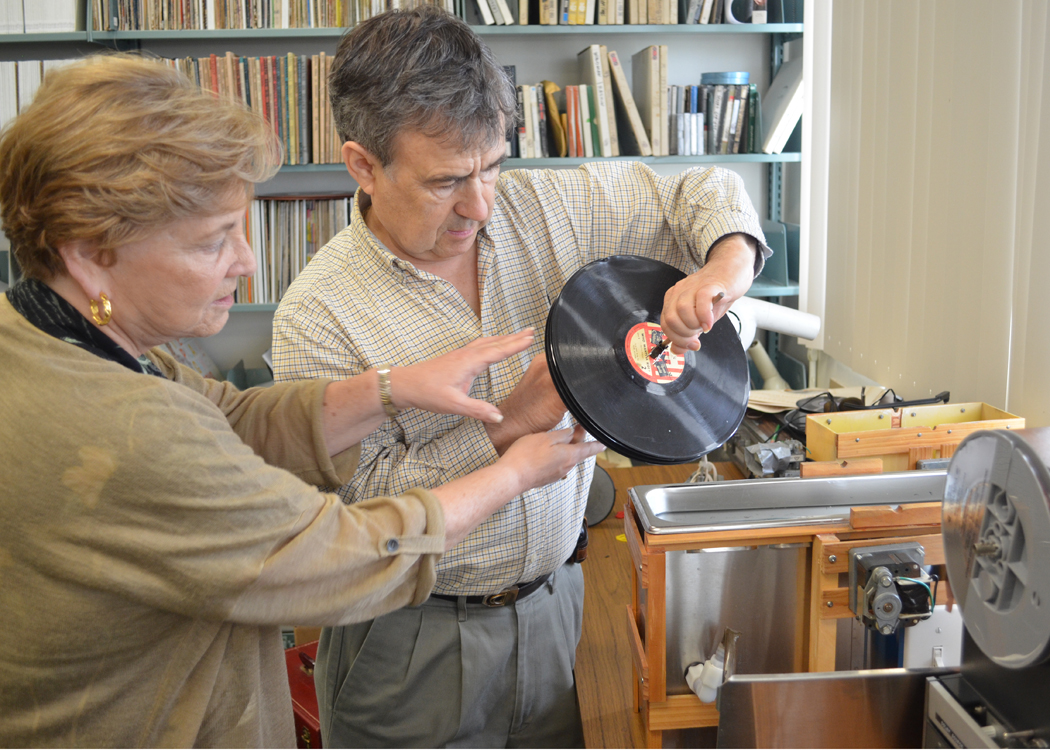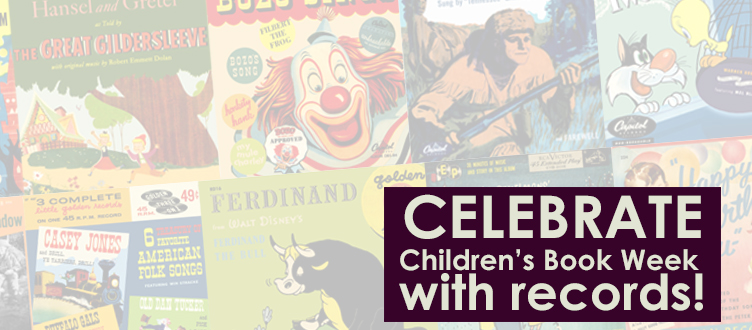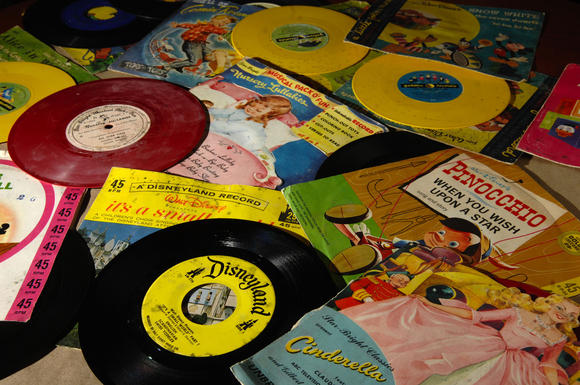In a small room on the fifth floor of FAU’s Wimberly Library, zippered bags clutch dozens of record sleeves of vintage children’s music, relics from another time. There’s Bongo, a circus bear unicycling on a tightrope and voiced by Dinah Shore. There’s “I Saw Mommy Kissing Santa Claus,” whose record sleeve depicts just that. There’s the Three Billy Goats Gruff, Pinocchio, Little Toot and Humpty Dumpty. One album cover, featuring Sylvester the Cat and Tweety Bird, includes a pencil-written note in the margin: “To: Dick Hertz. Birthday, Jan. 20, 1951. From: Mommy.”
 These forgotten treasures are currently the domain FAU’s Recorded Sound Archives (RSA), which began in 2009 as an extension of its popular Judaica Sound Archives; nowadays, the institution restores and digitizes lost and important music of all kinds. These recently obtained children’s record sleeves, their once-vibrant cover art damaged by flood and mold from Hurricane Sandy, are mostly second copies from the vast collection of Peter Muldavin, the world’s foremost expert on vintage children’s records. When his Long Island storage facility suffered storm damage, he donated its contents – 786 records – to the RSA, whose passionate archivist, Ben Roth, is a friend. Some of the 78 rpm records date back to the 1920s, bearing price tags of a quarter a piece. Read More About This…
These forgotten treasures are currently the domain FAU’s Recorded Sound Archives (RSA), which began in 2009 as an extension of its popular Judaica Sound Archives; nowadays, the institution restores and digitizes lost and important music of all kinds. These recently obtained children’s record sleeves, their once-vibrant cover art damaged by flood and mold from Hurricane Sandy, are mostly second copies from the vast collection of Peter Muldavin, the world’s foremost expert on vintage children’s records. When his Long Island storage facility suffered storm damage, he donated its contents – 786 records – to the RSA, whose passionate archivist, Ben Roth, is a friend. Some of the 78 rpm records date back to the 1920s, bearing price tags of a quarter a piece. Read More About This…


 By Scott Travis, Sun Sentinel
By Scott Travis, Sun Sentinel
![]() Themocracy
Themocracy